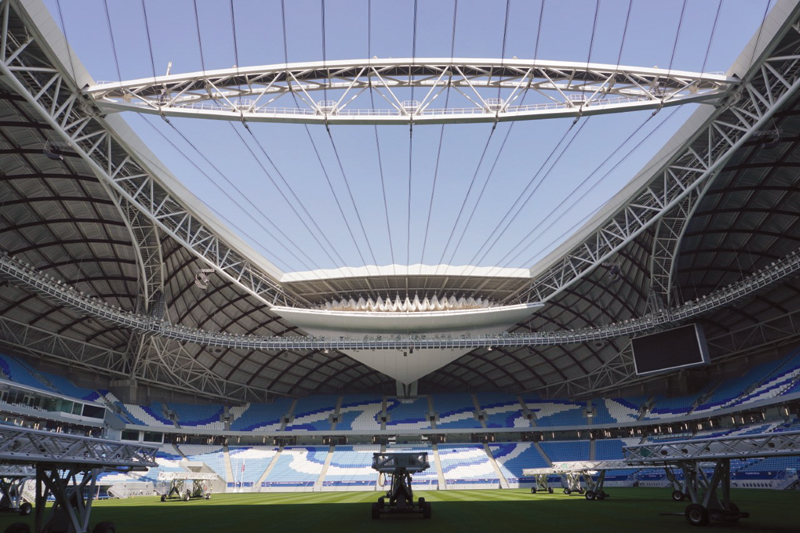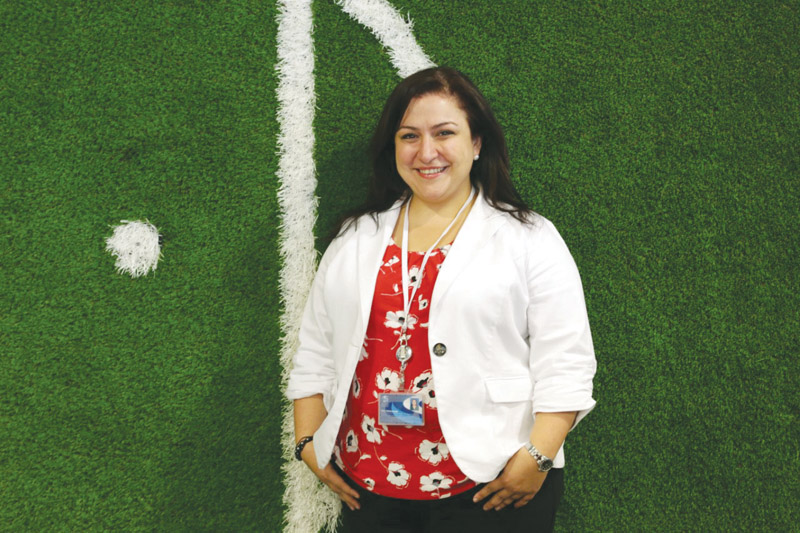
The Al Janoub Stadium design makes the stadium energy efficient, particularly in warm weather.
As part of the World Innovation Summit for Education’s (WISE) Doha Learning Days (DLD) this year, students of Qatar Academy Al-Wakra of Qatar Foundation’s (QF) Pre-University Education experienced a virtual tour of Al Janoub Stadium.
The activity, ‘Sustainability Secrets - Reimagining FIFA World Cup Stadiums,’ was initially meant to feature a visit to a stadium. Due to COVID-19 precautionary guidelines, which ruled out a physical stadium visit.
Determined to keep the activity going, WISE, a QF initiative, decided to bring the stadium to the children. This was made possible through collaboration with Josoor Institute, Supreme Committee for Delivery & Legacy, and Ali Bin Towar Network to create a short film on Al Janoub Stadium.

In the video, a Sustainability and Environment Expert with the Supreme Committee for Delivery & Legacy, Dr. Talar Sahsuvaroglu (pictured), walks the viewers through the stadium and explains the many ways in which it has weaved sustainability into its design and operations.
“Sustainability is not one part or one step in the process. Rather it is a whole process in itself. For example, when we hear about energy, the focus is often on consuming less energy. The reality is that the energy-saving journey starts with design efficiency, which takes place long before building. It entails design considerations that ensure a structure requires less energy, to begin with,” Dr. Sahsuvaroglu said.
One key example of this in Al Janoub Stadium is the retractable roof, and – as the name explains – the roof can be opened and closed. This design element makes the stadium energy efficient, particularly in warm weather. When closed, no cool air will be lost from the top of the structure, and consequently, less time and energy will be needed to cool the stadium.
Cooling is undoubtedly one of the biggest energy guzzlers in a stadium. With sustainability at the forefront of the design process, Al Janoub, like most other FIFA World Cup Qatar 2022 stadiums, opted for district cooling.
This cooling technology is 40 percent more sustainable than conventional air conditioning systems. Dr. Sahsuvaroglu said, “The way it works is that we have an energy center located just outside of the stadium. This energy center produces chilled water, carried to the stadium through a pipeline.
This then feeds into pipes distributed across the stadium. Fans are used to push air across these pipes, which cools the air; this cold air then exits onto the pitch and the spectator seating area through nozzles located across the stadium.”
Looking at sustainability from a materials point of view, every one of the 40,000 seats in the stadium is made in Qatar and locally recycled plastic.

Sustainability and Environment Expert with the Supreme Committee for Delivery & Legacy, Dr. Talar Sahsuvaroglu
“Being locally made means we make significant savings when it comes to transport costs as well as C02 gas emission, which is a greenhouse gas, with the latter arguably being more valuable than the former. Because they are recyclable – if they break, they can be sent back to the factory where the broken pieces can once again be melted and made into a seat. And of course, being locally made, they contribute to the local economy,” said Dr. Sahsuvaroglu.
One aspect of sustainability that many of us are unaware of is social sustainability. Quite simply, this means having a stadium that is accessible to everyone.
Dr. Sahsuvaroglu commented, “For people with limited mobility, we have accessible seats distributed around the top of the Al Janoub Stadium so people can pick whichever location they’d like to watch the game from.”WISE’s DLD serves as an experiential learning festival that explores various topics through innovative and interactive formats.
And this year, the festival is being held as a DLD Community Program, focusing on Al-Wakra – a member of the Unesco Global Network of Learning Cities.




